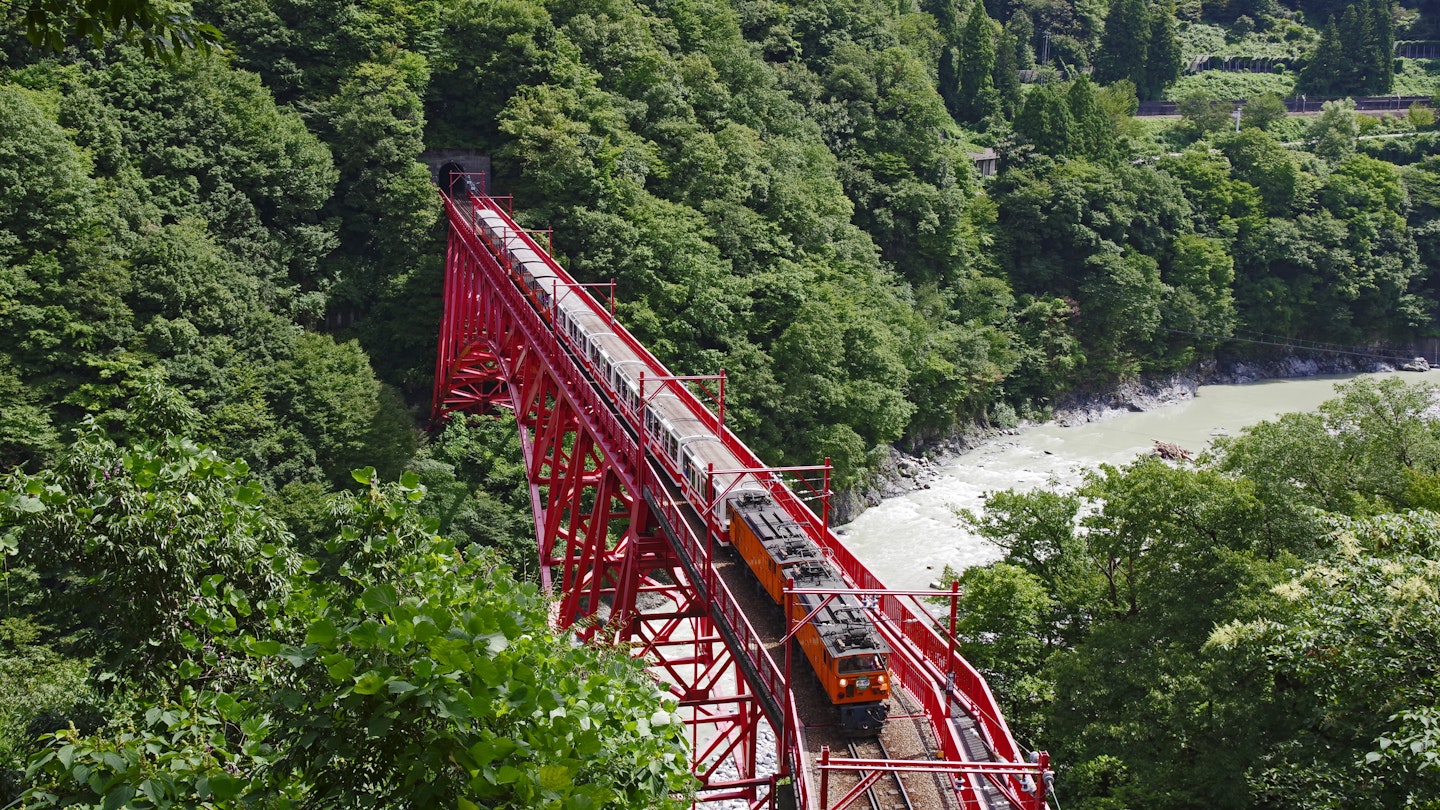Enjoying the Scenic Hida Train Journey through Japan
Travel through the mountainous Japanese countryside on the charming Hida train.
When you think about Japanese train travel, you might picture a high-speed Shinkansen soaring through tunnels and over elevated concrete viaducts towards Tokyo at speeds up to 200 mph (320km/h). While riding the bullet train is undoubtedly one of Japan’s best experiences, the rail journeys that capture my heart the most are much slower and quite charming.
Discovering the Hida Limited Express
The Hida train, one of Japan’s regional Limited Express trains, weaves its way from bustling Nagoya along the old pre-Shinkansen Tokaido Main Line before veering off through smaller cities and into the mountains. This train journey exposes travelers to some of the most quintessentially Japanese scenery imaginable. Between Tokyo and Kyoto, this ride is perfect for both first-time visitors and return travelers seeking to explore off the beaten path. Although the journey takes approximately four hours non-stop, much of the joy lies in breaking up the trip at one or both of the hot-spring resort towns along the route.
Beginning Your Journey
Nagoya’s main station conceals its own secrets. Beneath it lies a warren-like underground city that resembles a mini theme park. For stunning views, a sky-high two-floor restaurant area on top of the building features the Takashimaya department store, which includes a Starbucks offering views stretching southeast across the myriad of train tracks below.
Local dining options available for passengers include the delectable hitsumabushi eel, Nagoya-style chicken wings, misokatsu pork cutlet, local kishimen noodles, and in winter, the regional misonikomi hot pot. These culinary delights are perfect for enjoying on board.
Panoramic Views on the Hida Train
Named after the former Japanese province and river, the Hida train offers stunning views through wide windows. The train operates ten times daily, sometimes terminating at Takayama and sometimes continuing through to Toyama. Passengers can choose between charming older carriages from the 1980s or the brand-new sustainable hybrid diesel HC85.
The older trains feature a fully panoramic all-window nose, allowing you to relish the views as well as witness the driver skillfully navigating the train through the rugged mountain tunnels.
The journey begins on the Tokaido Line, an old pre-Shinkansen main line where lengthy commuter trains coexist with JR freight trains. As you progress, the train changes direction at Gifu, moving past Inuyama. This suburban town is worth a short detour to explore architectural highlights like Meiji-mura, Inuyama Castle, and the Uraku-en garden.
The Quintessential Slow-Train Experience
The Hida train offers a quintessential slow-train experience. As you glide alongside bright green and blue mountain rivers, marvel at tiny tunnels carved into the mountains by early 20th-century railway workers, and enjoy the seasonal forests and rice fields. This journey invites you to peek into the lives of small towns and possibly stop at one or both of the two main hot spring towns along the route.
Gero-Onsen
Gero-Onsen is traditionally ranked among Japan’s top three hot-spring towns and is home to the Gassho-Mura folk village, an open-air museum located a short distance from the station.
Takayama
Further along the route lies Takayama, often referred to as Hida Takayama to differentiate it from other locations sharing the name. Takayama is larger than Gero-Onsen and provides both hot springs and the picturesque Furui-machi-nami district, renowned for its historical wooden buildings.
The Hida and other local trains connect Gero-Onsen with Takayama nearly every hour. Be mindful of early sunsets in Japan; the last Hida train heading north to Toyama departs Takayama shortly after 5 PM.
Unique Features and Interesting Facts
At Inotani station, you can witness a driver change; this is the ‘border’ between the operating areas of the JR Central and JR-West railway companies. It’s a quick and efficient process.
Passenger experiences include informative broadcasts throughout the train, sometimes delivered via an ingenious low-tech system where a cassette player is held up to the microphone. Furthermore, signage in English has improved, and an increasing number of railway staff are proficient in other languages, making navigation more accessible for first-time visitors.
The Experience Upon Arriving in Toyama
Upon reaching Toyama, resist the temptation to rush to your next train. The city offers a delightful experience for transport enthusiasts, including a ride on the Toyama Portram, Japan’s first Light Rail Transit (LRT) line. Additionally, gourmets can savor incredibly fresh sushi from Toyama Bay, including the local specialty, pressed-trout masu-zushi.
Continuing Your Adventure
Nagoya serves as a key stop along the Tokaido Shinkansen line, as well as numerous slower conventional lines operated by various railway companies. In contrast, Toyama connects to the Hokuriku Shinkansen, allowing you to swiftly travel to places like Kanazawa or Fukui.
Optimal Travel Times
The best times to take the Hida train are during spring and autumn when the mountains are especially beautiful; however, winter trips offer unique charm thanks to heavy snowfall in Toyama Prefecture. Travelers are advised to avoid summer if they prefer to escape heat and humidity.
Culinary Delights on Board
While traveling, don’t forget to sample the regional ekiben bento boxes, showcasing scrumptious local specialties that are usually served with rice. It’s also worthwhile to visit souvenir stalls at the departure station for delightful snacks or local beverages, including sake and a growing selection of regional craft beers.
Accommodation Options
As is common in most Japanese cities, accommodations range from capsule options to reliable business hotels, as well as international brands near both Nagoya and Toyama stations.





